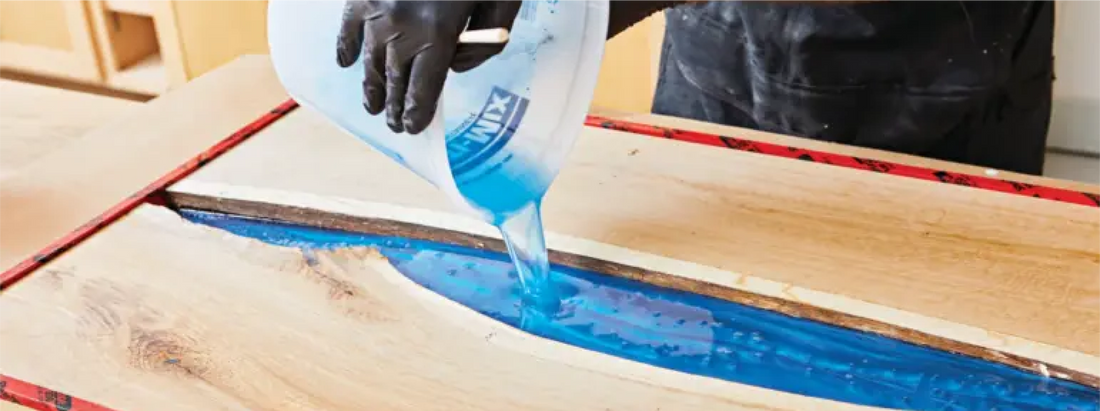
The Alchemy of Artistry: Unraveling the Science Behind Epoxy Resin
If you’ve ever admired a beautifully crafted runabout or explored the world of DIY projects, chances are you've encountered the magic of epoxy resin. This versatile material has gained immense popularity among artisans, builders, and hobbyists. In this article, we will delve into the fascinating science behind epoxy resin, its applications, and why it’s a go-to choice for safety and durability in various projects. By the end, you’ll understand why epoxy resin is more than just a substance—it's a transformative ingredient in your creations.
What Is Epoxy Resin?
Epoxy resin is a type of thermosetting polymer that is formed from the reaction of epoxy compounds and hardeners. Once mixed and cured, it creates a rigid, durable, and chemically resistant material. Epoxy resin's unique properties make it an ideal solution for a myriad of applications, particularly in crafting and boatbuilding.
The Chemical Makeup of Epoxy Resin
The science of epoxy resin is rooted in chemistry. At its core, epoxy resin is created through a process called polymerization. Here’s a simplified breakdown of the components:
Components of Epoxy Resin
- Epoxy Compounds: These are low-viscosity liquids that, when combined with a hardener, initiate a chemical reaction.
- Hardener (Curing Agent): Acts as a catalyst, facilitating the curing process which transforms the liquid epoxy into a solid state.
- Fillers and Additives: These can be added to enhance performance characteristics, color, or texture.
The Curing Process: Turning Liquid into Solid
The curing process is critical to the performance of epoxy resin. It begins when the resin and hardener are mixed, creating an exothermic reaction that generates heat. This heat facilitates the formation of strong molecular bonds as the liquid transitions to a solid state. Here’s what you need to know:
Stages of Curing
- Pot Life: The time frame in which the mixed epoxy can be used before it begins to harden.
- Tack-Free Stage: The surface of the epoxy becomes firm to the touch but remains soft inside.
- Full Cure: The epoxy reaches its maximum hardness and strength, typically within 24-72 hours.
Understanding this curing process is essential for ensuring that projects, including crafting durable runabout boats, meet the necessary standards for safety and performance.
Applications of Epoxy Resin
Epoxy resin is a multi-functional material that can be applied in numerous fields, from art and design to construction and engineering. Below are some of the most common applications:
Boat Building
One of the most notable applications of epoxy resin is in boat building. The water-resistant and sturdy properties of epoxy make it perfect for constructing and repairing runabout boats. It adheres well to wood, fiberglass, and metal while providing a seamless finish. For any watercraft enthusiast, the safety features provided by epoxy resin cannot be emphasized enough:
- Enhanced Durability: Epoxy resists moisture, UV rays, and chemical exposure, ensuring longevity.
- Structural Integrity: When used for bonding, epoxy creates strong joints, crucial for the safety of boats.
- Lightweight Composition: Compared to other marine materials, epoxy keeps the overall weight down while enhancing performance.
Home Improvement Projects
Beyond boat building, epoxy resin serves as an exceptional choice for various home improvement projects. From countertops and flooring to decorative coatings, this material shines due to its versatility and endless design possibilities.
- Countertops: Epoxy produces a glossy, high-end finish that can mimic natural stone.
- Resin Art: Artists use epoxy resin as a medium to create eye-popping, vibrant pieces.
- Coatings: A layer of epoxy can protect floors from stains, scratches, and moisture.
Art and Design
The artistic community has embraced epoxy resin for its ability to create stunning visual effects. Its capacity to be tinted and manipulated allows for endless possibilities in artistic expression. Whether it’s creating art pieces, jewelry, or decorative appliances, artists appreciate how epoxy can be precisely shaped and colored.

Understanding Safety with Epoxy Resin
While epoxy resin offers numerous benefits, it’s important to acknowledge safety considerations. Working with chemical substances requires awareness and preparation. Here’s how you can ensure a safe working environment:
Safety Gear
- Gloves: Always wear nitrile or latex gloves to protect your skin from irritation.
- Mask: Use a respirator or mask designed for chemical vapors to avoid inhalation.
- Eye Protection: Safety goggles are essential when mixing or applying resin.
Ventilation
Proper ventilation is crucial. Ensure that you work in a well-ventilated area or outdoors, as this reduces the concentration of fumes that can be harmful when inhaled over prolonged periods.
Storage and Disposal
Store epoxy resin in a cool, dry place away from heat sources. Always follow local regulations regarding disposal. Many communities have designated disposal sites for hazardous materials.
Common Misconceptions About Epoxy Resin
Even with its rising popularity, there are still several misconceptions surrounding epoxy resin. Here are a few to be aware of:
Epoxy Is Waterproof
While epoxy is water-resistant, it’s essential to note that it’s not completely waterproof. If submerged underwater for extended periods, it can be compromised. This fact is particularly pertinent for boat builders who want to maintain the integrity and safety of their vessels!
Epoxy Can Be Sanded Immediately
Another misconception is that epoxy can be sanded right after curing. It's vital to wait for the full cure before sanding to ensure the best results and prevent damage.
Why Choose Epoxy Resin?
In the realm of crafting, construction, and artistry, epoxy resin reigns supreme for numerous reasons:
- Longevity: Its resistance to wear and tear ensures that your work lasts for years.
- Flexibility in Applications: Whether you’re creating a stunning countertop or a part of your runabout, epoxy is adaptable to your needs.
- Environmentally Friendly Options: Many modern epoxy products are designed with lower VOCs, making them safer for both you and the environment.
Your Next Steps in the Epoxy Journey
The possibilities are endless with epoxy resin, making it the perfect addition to your toolkit—whether you’re crafting a runabout, enhancing your home, or creating artistic masterpieces. Understanding its science and safe handling will allow you to unleash your creativity. Embrace the mediums and watch as they transform into durable, stunning creations.
In your explorations, remember to prioritize safety while enjoying the captivating process of working with epoxy. So gather your supplies, wear your safety gear, and embark on an amazing journey into the realm of epoxy resin. The world of crafting is at your fingertips, and with epoxy resin, the only limit is your imagination!


















































